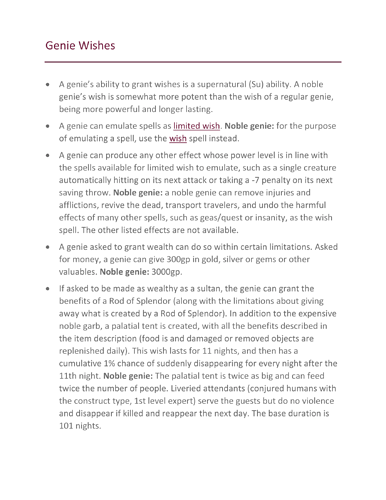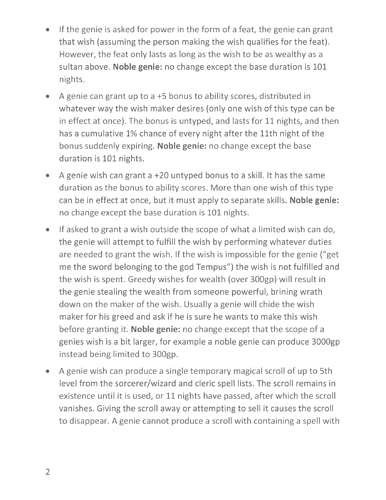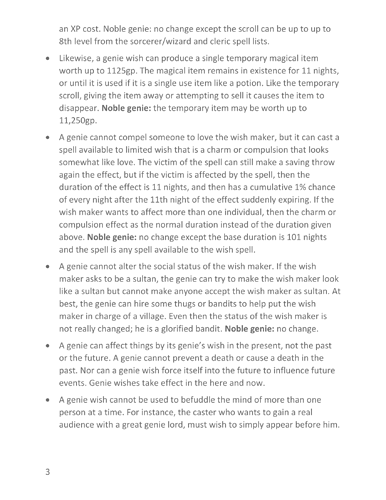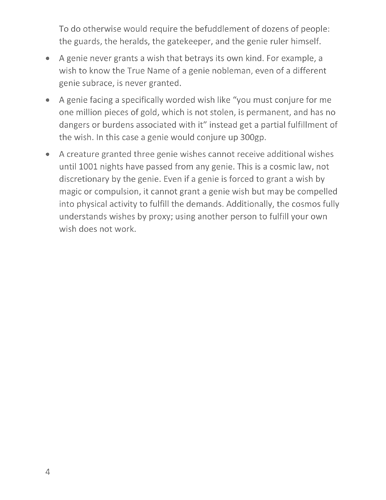I think western culture has over simplified genies, leading to unfortunate misunderstandings about their origin and nature.
Jinn, romanized as Djinn, and anglicized as genie, are actually spirits or demons. They predate Islamic culture as well as Arabian culture.
Islam acknowledges jinn as one of the few creatures besides humans that are not born innately good or evil, thus being able to choose between the two. Most are troublemakers and often take the forms of animals. They were apparently worshipped despite being explicitly mortal in pre-Islam cultures, and sometimes associated with desert, defiled, and/or other unclean locations (yes, on earth not Athas). They were more powerful than humans, but not so powerful that a great human couldn’t defeat one in single combat. They were feared for their “invisible form”, which was considered part of their shapechanging. Some were vampiric, and all were generally stronger and faster than most humans, plus their various powers of mental control, possession, transformation, and elemental control, often wind or fire. They are often repelled by salt or iron.
The story of the magic lamp isn’t even from Arabia at all, and was not included in the original 1001 tales… it was actually added to the collection by the translator, was told to said translator by a Syrian, and was explicitly a Chinese boy who got the lamp (and a ring!) both with jinn bound inside, and fought with the evil wizard and the wizard’s even more evil brother. There is also a Russian version of the tale, which I have seen a movie adaption of, where the jinn is more mischievous and grumpy, and must be coaxed into doing things. In any case, Galland’s version of the jinn, including using the French word genie instead of jinn, stuck with westerns… and then a certain 60’s sitcom followed by Disney happened, pretty much cementing that westernized version.
Sigh.
In Mesopotamia, where it is thought that the concept of jinn originated, there are a number of demons that match both abilities and habitats, if not always the attitudes.
Islam claims the jinn are real, and many today still believe and blame various medically unexplained ills upon jinn. Political enemies sometimes accuse others of conspiring with shaitan or ifrit, two of the five sub types of jinn which have dedicated themselves to evil and rejected God. They are said to love abandonded structures and wasteland environments, but otherwise are like mortals despite their powers: they are born, age, marry, have jobs and families, worship (at least the good ones do), choose between good and evil, form communities, and eventually die to be judged by God, just like humans. They are considered to have been created from smokeless fire, much like humans were created from dirt and angels were created from light. Some claim that jinn were created first and inhabited the world before humans were created, and God demanding the jinn be subject to Adam, is what caused some to choose to rebel and become evil, because they thought they were superior to humans.
Jinn are almost the same as shedim in some Jewish traditions, up to and including some of them converting to follow God, being mortal despite their powers, and thus becoming good. Often associated with one of the three Books of Solomon (not the song). This is also the origin of the concept of asmodeus, who was originally depicted as a jinn that opposed King Solomon, as well as pazuzu, who was a demon or wind spirit of the mesopotamian variety.
In buddhism, deva and asura correspond to jinn.
The only appearance in christianity related texts is a specific translation of the Arabic version of the old testament where the term in Hebrew usually translated as “familiar spirits” is rendered instead as the plural jann.
So here is your dose of history, religion, mythology, and factoids for the day all in one post!
Thus, I think they can be made to fit into Athas just fine… with just a little tweaking.




